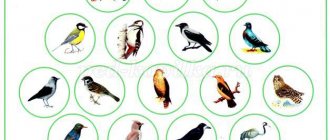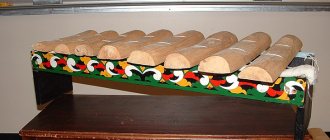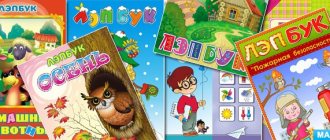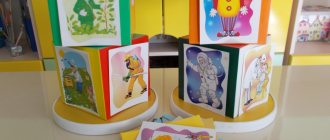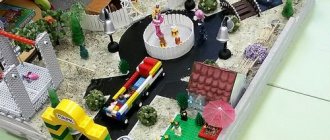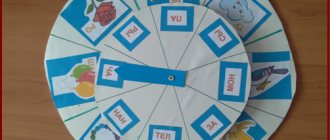Game didactic manual “Smile!”. Introducing preschoolers to human feelings and emotions
Module “Magic Mirror” (3 – 7 years)Individual work
Target:
Teach preschoolers to understand their emotional states. Learn to understand emotional states from a person’s facial expressions. Give an idea of ways to express your own emotions. Teach preschoolers to express their emotional state and the state of others in speech. Improve your ability to manage your feelings and emotions.
Options for game exercises and tasks:
- The child is asked to look at his face in the mirror and describe himself and his mood. You might suggest putting a felt pictogram on the back of the mirror.
- The child chooses a card with an image of an emotion, he is asked to repeat this emotion in the mirror and examine himself, or put the emotion out of felt on the back of the mirror.
- The teacher reads a poem or prose to the child describing an emotion, the child displays it in the mirror or places a felt pictogram on the other side of the mirror.
- The teacher asks the child to choose a card with an image of an emotion and, looking in the mirror, say a phrase in this emotional state. (for example: “Let’s get to know each other!”)
- The child tells the teacher about his mood today, or chooses a card and describes the emotion without showing it to the teacher, and the teacher lays out a felt pictogram. The child evaluates the correctness of the task.
Module “Color of Mood” (4 -7 years)
Individual work, work in small subgroups
Target:
Teach preschoolers to understand the emotional states of themselves and those around them. Teach children to understand their inner world, express its state through color. Improve your ability to manage your feelings and emotions. Teach preschoolers to express their choice in speech.
Options for game exercises and tasks:
- The child is asked to choose a card with an image of an emotion, place it in the center of the flower, think and select petals of the color that, in the child’s opinion, most reflect this emotional state.
- The teacher matches the petals to the flower, and the child selects a card with an emotion.
- The child matches the petals to the flower, and the teacher selects a card with an emotion.
Module “Guess the Emotion” (4 -7 years old)
Individual work, work in small subgroups
Target:
Teach preschoolers to understand the emotional states of people around them. Teach preschoolers to express in speech their emotional state of others.
Options for game exercises and tasks:
- The teacher covers one part of his face (mouth, eyes, eyebrows) with a felt palm and depicts some emotion with facial expressions. The child selects a card with such an emotion and explains his choice.
- The child covers one part of his face (mouth, eyes, eyebrows) with a felt palm and depicts some emotion with facial expressions. The teacher selects a card with such an emotion and explains his choice.
- The task is the same, but 2 children participate in it. The teacher controls.
Module “Heroes of Fairy Tales” (4 -7 years)
Individual work, work in small subgroups
Target:
Teach preschoolers to understand the emotional states of people around them. Give an idea of ways to express your own emotions (facial expressions, gestures, posture, words). Promote a better understanding of fiction and theater productions
Options for game exercises and tasks:
- The child is asked to look at cards with images of fairy-tale characters, select a pictogram for each character and explain his choice.
- The child uses facial expressions, gestures, and posture to depict some hero, and another child or teacher guesses who the child chose.
Module “Our actions” (3 -7 years)
Individual work, work in subgroups
Target:
Teach preschoolers to understand the emotional states of themselves and those around them. Teach children to understand their inner world and express its state in speech. Improve your ability to manage your feelings and emotions.
Options for game exercises and tasks:
- For preschoolers 3 -5 years old. The teacher suggests looking at plot pictures of children’s actions and asks how the children feel about this action. Kids look at the picture and raise a happy or sad emoticon (depending on their attitude).
For preschoolers from 5 years old, the teacher suggests choosing cards or pictograms with a variety of emotions.
- For preschoolers from 5 years old, they are asked to select a pictogram for each plot picture and explain their choice. Then you can offer to choose a pictogram showing how the emotion can change if you correct the mistakes in the children’s actions in the pictures.
- For preschoolers from 5 years old, consider the plot picture and match the emotion to the feelings of each character depicted in the picture
Module “Fold the picture” (5 -7 years)
Individual work
Target:
Learn to understand emotional states from a person’s facial expressions. Give an idea of ways to express emotions. Teach preschoolers to express in speech the emotional state of others. Develop attention and logic.
Options for game exercises and tasks:
- The teacher reads a poem or prose about emotions, the child puts together a suitable picture of 3 parts (eyebrows, eyes, mouth).
- The child puts together a picture, the teacher reads a poem or prose, the child determines whether the teacher has chosen the right text for his picture.
- The teacher deliberately puts the picture together incorrectly, and the child finds a mistake. Explaining your choice.
Module “Pick an emotion” (3 -7 years)
Individual and subgroup work
Target:
Teach preschoolers to understand the emotional states of themselves and those around them. Give an idea of ways to express your own emotions (facial expressions, gestures, posture, words). Teach children to understand their inner world and express its state. Improve your ability to manage your feelings and emotions.
- For preschoolers 3 -5 years old. The teacher asks the children questions about what they like or don’t like. (for example: “Do you like sharing toys?”) Toddlers think about it and raise a happy or sad smiley face (depending on their attitude). The teacher helps the kids make the right decision.
For preschoolers from 5 years old, the teacher asks children questions about how they feel in a given situation, what they love, or what they dream about (for example: “How do I feel, it’s raining?”, “How do I feel when my friend has recovered?” ?) Children think about it and pick up the pictogram (depending on their attitude). The teacher encourages children to discuss.
- For preschoolers from 5 years old. The teacher reads a poem or prose to the child describing an emotion, the child selects a card or picture that matches the description.
DIY didactic game “Guess the Emotions”
Muminat Feyzullaeva
Do-it-yourself didactic game “Guess the emotions”
Goals: to introduce children to basic emotions : joy, sadness, anger, fear; to develop in children the ability to recognize the emotional manifestations of other people based on various signs (facial expressions, pantomimes)
;
enrich and activate children's vocabulary with words denoting various emotions , feelings, moods.
The game is made with your own hands , in the form of emoticons. To begin with, I drew the necessary emotions
Then I cut out circles with emotions
Then I painted both sides with gouache.
Next, I outlined our emotions with felt-tip pens and completed the necessary details, as shown in the next photo.
Well, at the end I laminated it with tape on both sides.
And voila, our emoticons are ready!
Option 1. Invite the children to take turns taking any emoticon without showing it to the others. The child’s task is to recognize the emotional state and depict it using facial expressions, pantomimes and vocal intonations. The rest of the children - the audience - must guess what emotions the child is portraying and what is happening in his mini-scene.
Option 2. To study the intensity of emotions , the task can be complicated by asking one child to depict, for example, joy, and the other - delight (irritation - rage, sadness - grief)
.
The task of the other children is to identify these emotions .
Do-it-yourself didactic game “Professions” If you have a color printer, it is not at all difficult for a teacher to make a didactic printed board game on their own. As an example. Didactic game “Make a portrait” with your own hands A fun, exciting game of drawing up portraits will certainly interest children. After all, there can be a great many portraits! Big. Do-it-yourself didactic game “Find a web for a spider” for children 3-4 years old Didactic game with your own hands “Find a web for a spider” for children 3-4 years old. Games are an essential element of a child’s development and upbringing. Do-it-yourself didactic game “Pick buttons for a shirt” GOAL: Development of fine motor skills of the hands, memory, attention. Consolidating knowledge of colors. Learn to alternate colors in accordance with the teacher’s example, teach. Do-it-yourself didactic game “Guess the bird by its silhouette” Children of the preparatory group are happy to participate in making didactic games with their own hands. First I pre-printed it. Do-it-yourself didactic games “Guess by touch” Dear colleagues, I present to your attention educational games that you can make with your own hands for preschool children. Do-it-yourself didactic game “Tic Tac Toe” To entertain a child, adults sometimes spend impressive sums buying all kinds of toys - both ordinary and computer ones. But if. Didactic game “Do-it-yourself imitation laces” Much has been said and written about the benefits of games aimed at developing fine motor skills. The better and more often your baby plays such games, the sooner.
Source
Didactic game "Emotions"
The activity is useful for preschoolers and primary schoolchildren. It is suitable for both individual and group work in kindergarten, and can be used for home schooling.
The purpose of the didactic game “Emotions” is to teach the ability to express and distinguish between human feelings and to respond correctly to them.
Tasks:
For the didactic game “Emotions” for children, you need to cut out paper blanks: two images of a head (a boy and a girl) without parts of the face. A set of facial parts depicting different feelings must be made separately.
Progress of the lesson
There are several options for the didactic game “Emotions” for preschoolers. For a simple lesson, the teacher lays out pictures on the table. Children select different lips, noses, eyes for the boy and girl depicted until they achieve a certain emotional state. Participants explain what emotion they managed to portray, show it on their face (if desired, supplement it with gestures and phrases).
The game can be played for a couple of participants. Children depict certain feelings on paper faces, then come up with dialogue from the created characters, and reproduce it with appropriate gestures and intonation.
For younger preschoolers, a simple game “Guess the Emotion” is suitable. Each of the participants takes turns depicting a certain emotional state: fun, sadness, boredom, anger, dissatisfaction, resentment, fear, curiosity, fatigue, confusion, love and others. Other players must guess what kind of feeling their friend is trying to portray and name it.
“Emotions” is a fun game for the emotional development of preschoolers
The didactic game “Emotions” introduces kindergarteners to different feelings, expressing them through changes in facial expressions and intonation, body language and body movements. Emotional development is the most important area of work with preschoolers. It is important to teach children to react correctly to events, to be aware of their own feelings and experiences, to share them, and to treat the emotions of others with attention and understanding.
